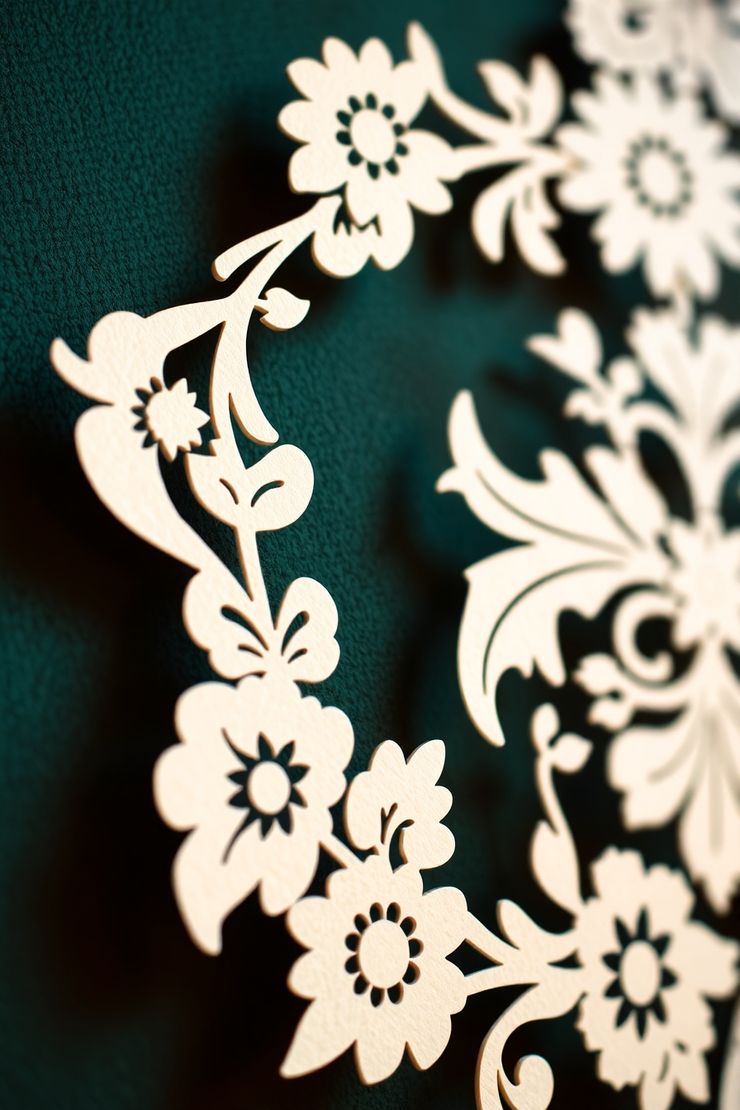Welcome to MyStitchWorld.com. Cross Stitch Distributors
The Exquisite Art of Paper Cutting: A Delicate Dance Between Blade and Surface
Paper CuttingPapeIn the realm of artistic expression, where mediums range from the bold strokes of paint to the weighty permanence of stone, there exists a captivating art form defined by its delicate precision and ethereal beauty: paper cutting. More than just snipping shapes from a page, paper cutting is a meticulous dance between a sharp blade and a fragile surface, transforming simple sheets into intricate narratives, breathtaking patterns, and stunning three-dimensional creations. It is an art form that speaks of patience, focus, and the profound beauty that can emerge from subtraction.
For centuries, across diverse cultures, the act of carefully removing portions of paper has served as a means of decoration, storytelling, and spiritual expression. From the delicate jianzhi of China, often adorning windows and celebrating auspicious occasions, to the intricate papel picado of Mexico, vibrant banners narrating tales of life and death, and the elaborate Scherenschnitte of Germany and Switzerland, with its symmetrical silhouettes depicting pastoral scenes and religious motifs, paper cutting boasts a rich and varied global heritage. Each tradition carries its own unique aesthetic and cultural significance, yet they all share the fundamental principle of revealing form through the absence of material. The Anatomy of the Cut: Tools and Techniques of the Craft At its heart, paper cutting requires a few essential tools, but mastery lies in the precision and control wielded by the artist. The most crucial element is a sharp blade, typically a craft knife or scalpel with replaceable blades, allowing for clean and intricate cuts. A self-healing cutting mat is indispensable, protecting the work surface and extending the life of the blade. Various types of paper serve as the canvas, ranging from delicate tissue paper to sturdy cardstock, each offering different textures and structural possibilities. Additional tools might include specialized scissors for curved cuts, tweezers for manipulating delicate pieces, and light boxes for tracing intricate designs. The techniques employed in paper cutting are as diverse as its applications. Freehand cutting, relying solely on the artist's skill and vision, allows for spontaneity and organic forms. Stenciling involves cutting designs into a template and then using it to create multiple identical images. Layering builds depth and complexity by cutting multiple sheets of paper and arranging them to create shadows and visual interest. Pop-up techniques transform flat paper into three-dimensional structures that leap off the page. The specific approach often depends on the desired aesthetic and the complexity of the design. The Allure of Negative Space: Finding Form in Absence One of the most captivating aspects of paper cutting is its profound reliance on negative space. The areas that are cut away are just as crucial as the paper that remains, defining the contours and creating the overall image. The interplay between positive and negative shapes creates a visual dialogue, inviting the viewer to appreciate the form that emerges from the deliberate removal of material. This focus on absence imbues paper cuttings with a unique sense of lightness and transparency, often creating intricate lacework patterns that seem to float on the surface. Beyond Decoration: The Multifaceted Applications of Paper Cutting
While often admired for its decorative qualities, paper cutting extends far beyond mere ornamentation. Its applications are as varied as the imaginations of its practitioners:
The Enduring Appeal: Why Paper Cutting Still Captivates In an age of digital fabrication and mass production, the handcrafted nature of paper cutting holds a particular allure. Each piece is a testament to the patience, skill, and artistic vision of the creator. The delicate fragility of the paper juxtaposed with the sharp precision of the cut creates a compelling tension, reminding us of the beauty that can emerge from focused intention. The accessibility of the materials also contributes to its enduring appeal. With just paper and a blade, anyone can embark on this creative journey. The learning curve can be gentle, with simple shapes and designs providing a satisfying starting point, while the potential for complexity and mastery offers a lifelong pursuit. Paper cutting is more than just a craft; it is a meditative practice, a form of visual poetry, and a tangible connection to artistic traditions that span centuries. It is a reminder that even the most humble of materials can be transformed into something exquisite, a testament to the power of human creativity and the delicate dance between blade and surface. Whether you are drawn to its intricate beauty, its historical significance, or the quiet focus it demands, the world of paper cutting offers a rewarding and endlessly fascinating artistic adventure. So, take a breath, steady your hand, and witness the magic unfold as you carve beauty from the void. |

